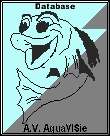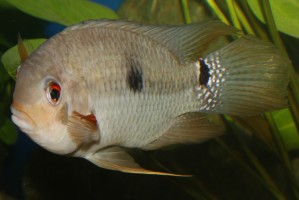 |
Aequidens tetramerus |
 |
||||||||||||||||||||||
|
|
|
|
||||||||||||||||||||||
| Explanation of the symbols | ||||||||||||||||||||||||
|
|
||||||||||||||||||||||||
 |
|
|||||||||||||||||||||||
|
As a youngster these fish are rather peaceful , but as
an adult they become extremely aggressive. You should
keep the fish as a couple. They are very territorial.
The tank should be large and have plenty of caves and nooks
to hide in. Therefore you use driftwood and stones. A
frequent changing of the water is necessary. Feeding is not a problem as all types of live and frozen food are taken. Breeding is easy. Up to 1000 eggs are laid on a flat stone and fertilized. Both parents take care of the fry. They can be fed with baby brine shrimp. |
||||||||||||||||||||||||
|
|
||||||||||||||||||||||||
|
Hans Meulblok |
||||||||||||||||||||||||
 |
||||||||||||||||||||||||
|
Copyright ©AV AquaVISie. All rights reserved. |
||||||||||||||||||||||||